One of the newest landmarks of Litomyšl is the New Church, in other words chapel of the Litomyšl Congregation of the Presbyterian Church, which can be seen by anyone who travels on the road number I/35 in the direction of Moravská Třebová and Svitavy. This modern richly glazed building made of concrete specific for its tilted roof reminds passerbys of harmonica, torn up paper or pedals of a harmonium.
THE NEW CHURCH
Oh Lord, your mercy touches the sky, to the sky goes Your fidelity.
AN OASIS BY THE ROAD
Enter the New Church and as if with a flick of a magic wand you find yourself in an oasis of quiet, away from the outer noise, in a place devoted to praying. There is a lot to ponder upon. Not just upon the greatness of God but also about the unusual teamwork with the city of Litomyšl.
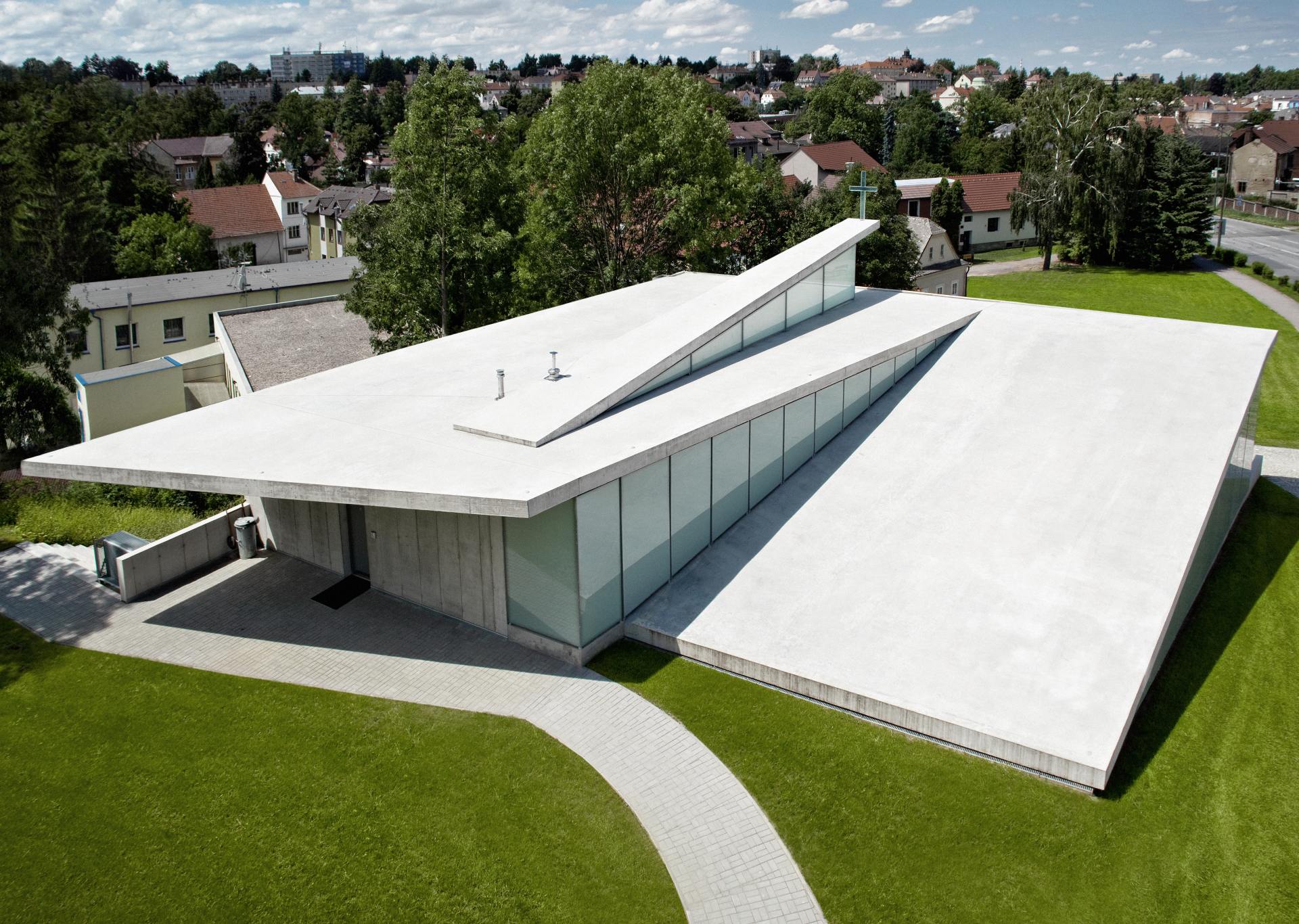
THE CHANGE AFTER 100 YEARS
The character of the Presbyterian Church, which has been operating in Litomyšl since 1909 in a villa in Nádražní street is one of the small kinds of churches that builds on the confessional past of the Unity of the Presbyterian Church originating in the 16th century, which operated in Litomyšl as well as its surroundings.
Due to the growing number of members, the Congregation of the Presbyterian Church could no longer fit into its villa. The first idea to expand the original building was ruined by higher implementation costs in the floodplain of the Loučná River. This situation and further negotiations with the city of Litomyšl, especially the helpfulness of the city management, decided on the new building.
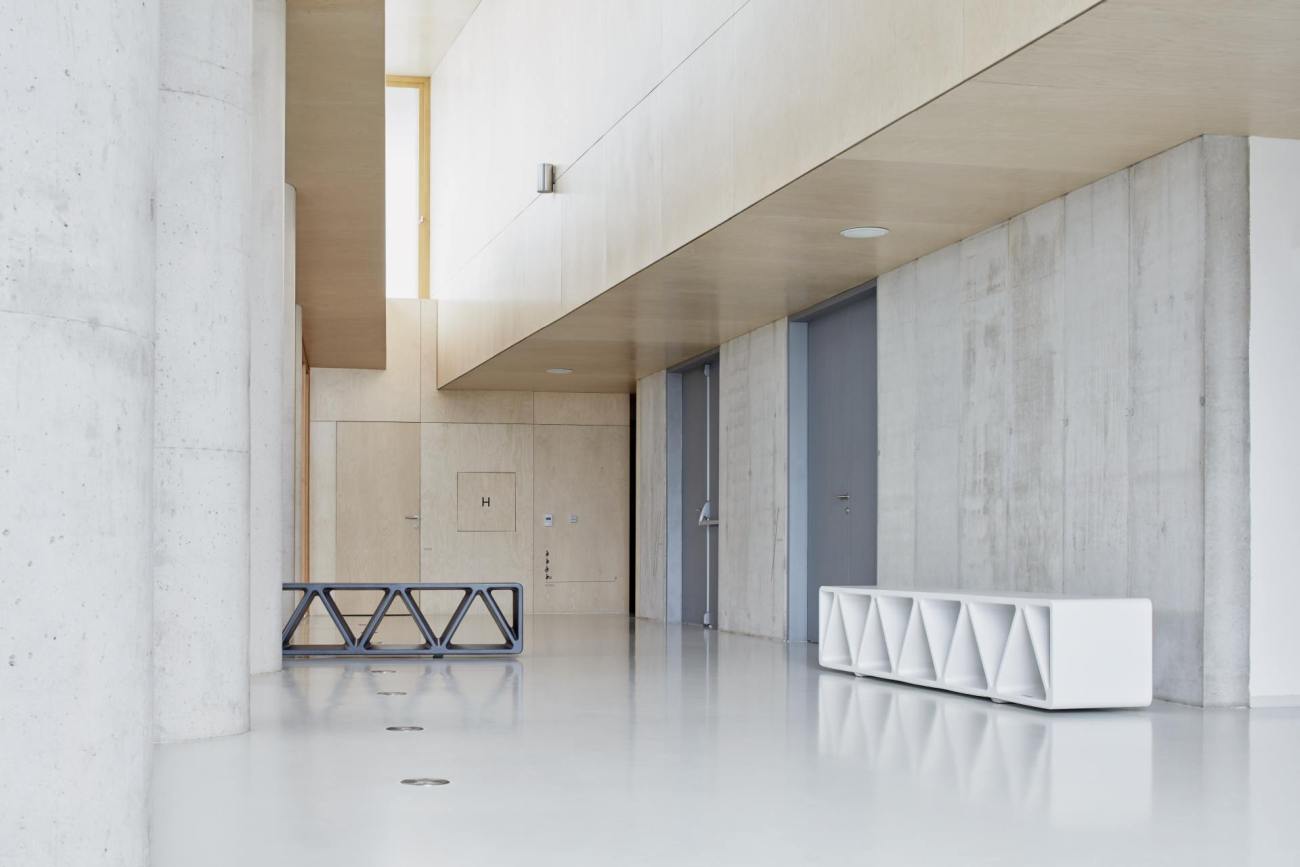
FROM THE NÁDRAŽNÍ STREET TO THE CENTRE
Although the local organization of the Presbyterian Church had a maximum of one million Crowns at its disposal, it embarked on the difficult task with determination. They managed to negotiate and sell the villa in which the church used to meet. After the first unsatisfactory offer of a building plot on the edge of the village, finally, the right one appeared: in the very center, with a view of the other two sacral landmarks of Litomyšl.
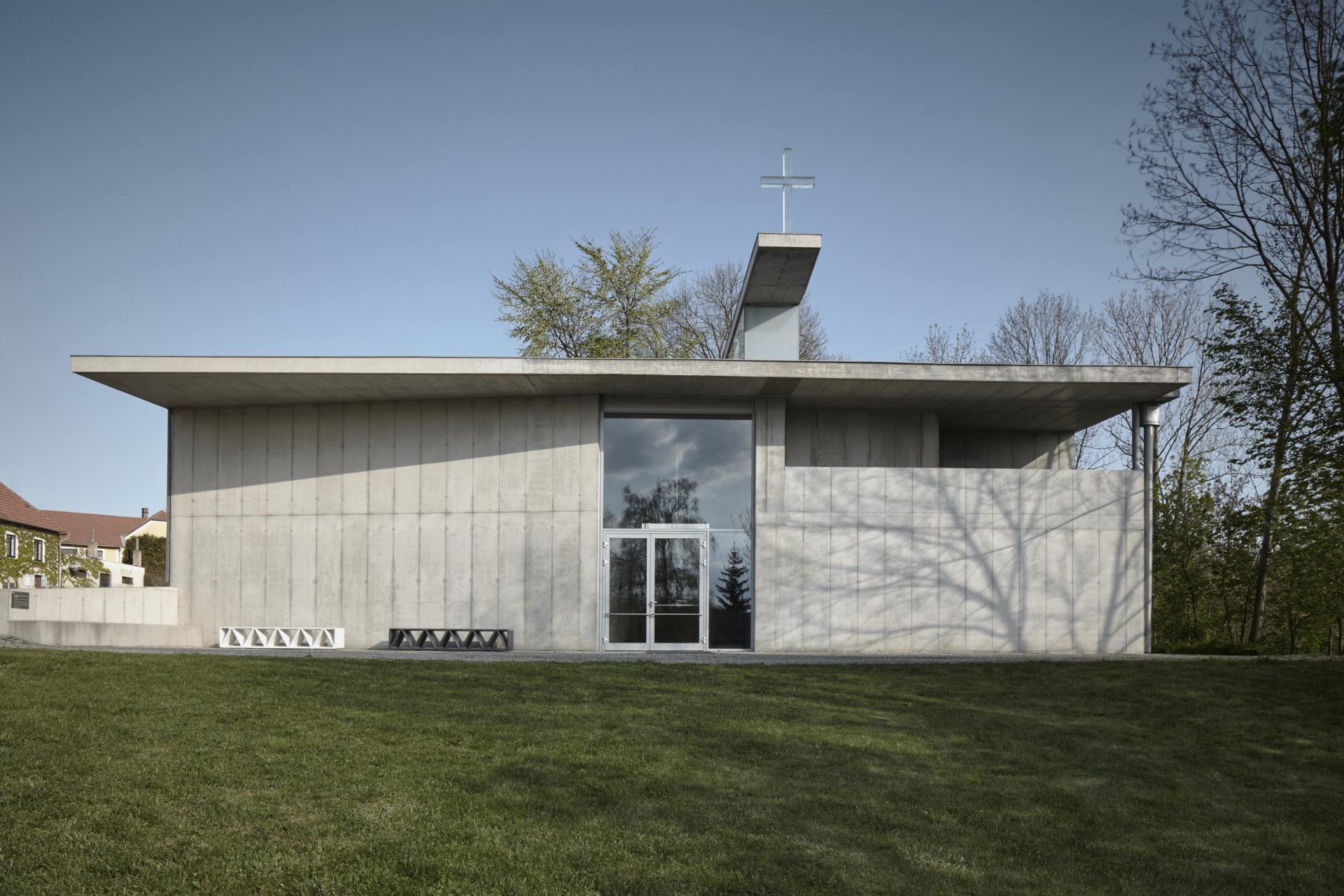
We are an open community
The Litomyšl Presbyterian Church is open to all kinds of people regardless of their gender, race, skin colour, sexual orientation, nationality or social origin. Here you will meet children and seniors, families and individuals, believers and faith seekers, those in need and helpers.
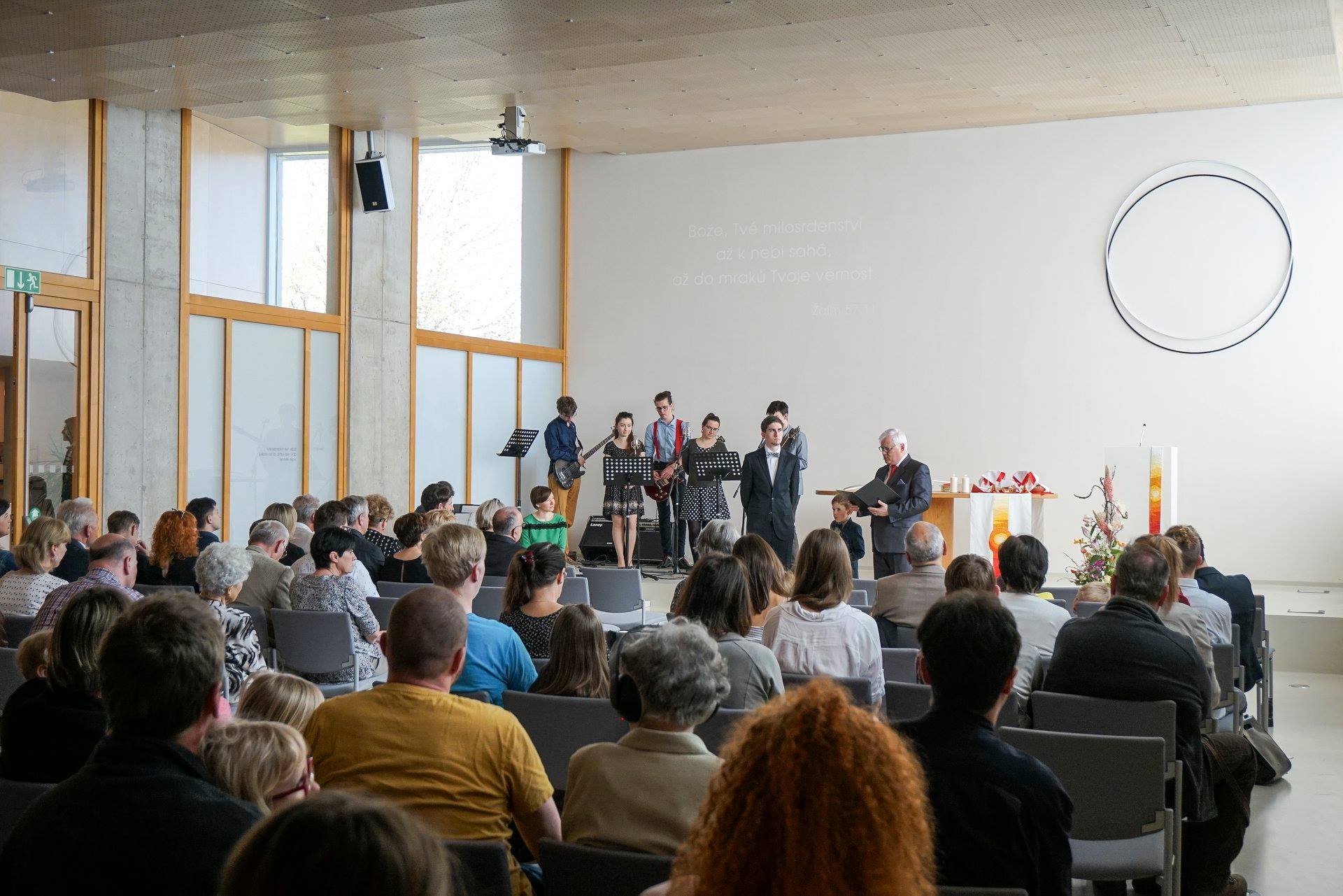
We believe in God
The Presbyterian Church, along with other Christian churches, professes personal faith in one God – the Father, the Son and the Holy Spirit, who created the world, became one of us in Jesus Christ and remains with us to this day.
We are inspired by the Bible
The Presbyterian Church continues the tradition of the old Czech Unitas Fratrum and strives for contemporary, practical Christianity in the spirit of the Bible: in essential matters unity, in other matters freedom and in everything love.
We are part of a big family
The Presbyterian Church works in about 160 places, in congregations and associated stations, in Bohemia, Moravia and Silesia. Individual places enjoy a relatively large degree of independence in the way and forms of their work.
THE LIFE OF OUR COMMUNITY
On Sundays we meet for services and on weekdays we organize clubs for children and youth. We also hold meetings in small forms – groups for everyone who wants to develop, stop and calm down, or need someone to listen to them.
SUNDAY SERVICE
During our Sunday services we pray together, sing Christian songs, and reflect on the biblical text. We share everything with each other, serving bread and wine from one table along with Christ. At the same time, a program for children is taking place in our clubhouses. Services include communal time, conversations, as well as communion with coffee. We separate our own ways as everyone needs…
Services are held every Sunday at 9:30, if people are interested, we arrange additional hours on Sunday. Everything is written in the current announcements.
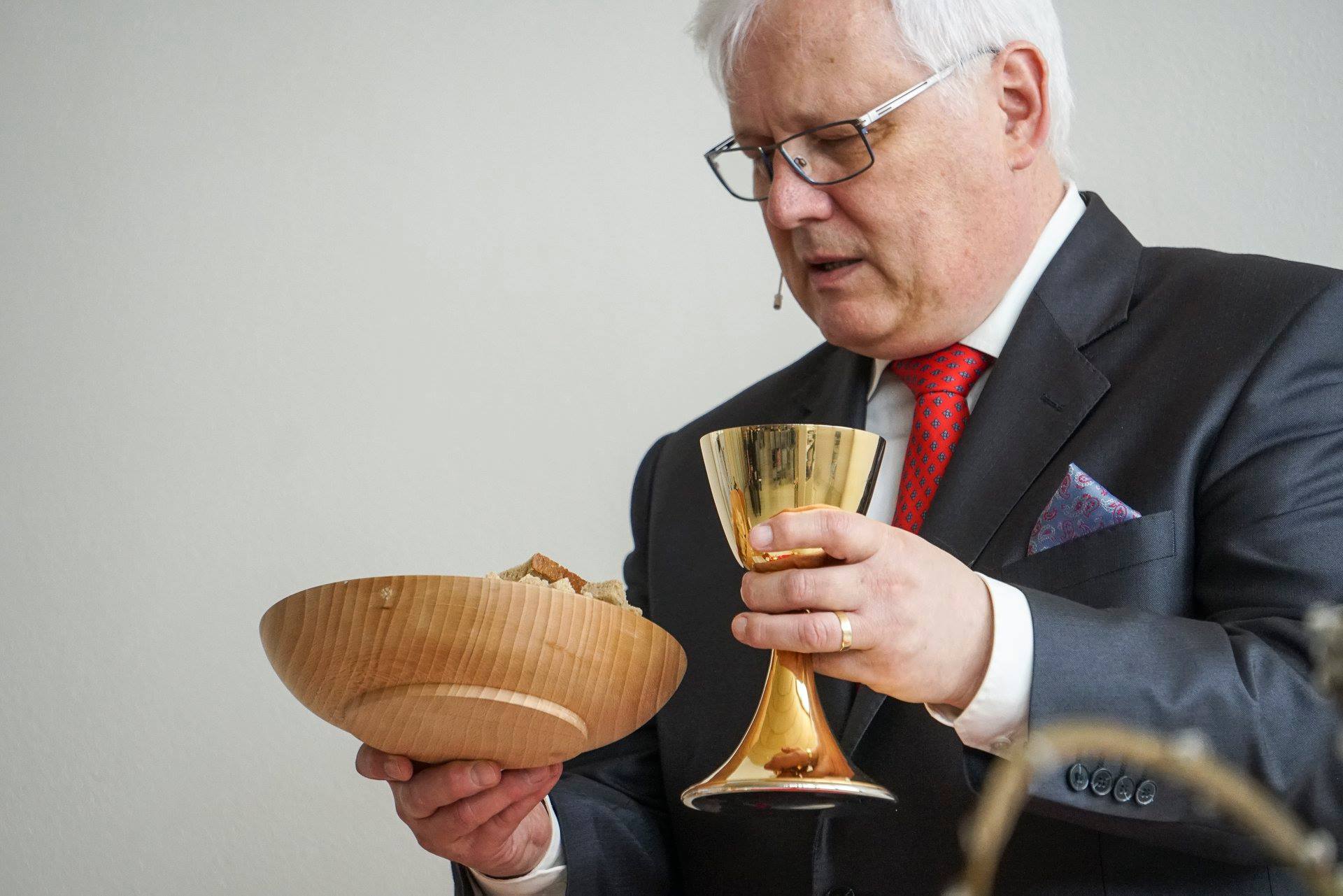
FIRST TIME AT A SERVICE?
Sundays have a similar pattern. The preacher welcomes the visitors, followed by prayer or songs. Then we read from the Bible. We serve bread and wine, as Christ has ordained. In our church it is not strictly determined when to sit and when to stand. It is okay if someone feels the need to kneel. We sing together but it is enough to just listen. During some services, the singing is led by a band. Other times we sing accompanied by an organ or piano. A short part of the service is also reserved for children in the form of storytelling.
SERVICE INSPIRES, IT DOES NOT MORALISE
Service is a reflection on the biblical text and its message for current listeners. In the Bible, the preacher finds inspiration for everyday life and raises important questions, such as – How to maintain healthy relationships? How to learn forgiveness? How to fulfill our life?
The preacher also reveals from the biblical text who God is and how we can relate to Him.
In order for a preacher to be able to update an ancient biblical text, they must understand the time in which the Bible was written as well as the people for whom it was written at the time. Also, they must be sensitive to the themes of today, only then can they connect today’s world and the message of the Bible appropriately. To do all of this, they need a theological education and, as it is said, inspiration from the Holy Spirit.
MEMENTO OF THE LAST SUPPER
At least once a month in memory of Christ’s crucifixion, we celebrate the Lord’s Supper, you may know it from the Catholic Church as the Holy Communion. We receive bread and wine, thus avowing to the tradition of the Protestant Reformation. The Lord’s Supper is attended by church members or baptized people from other churches – others are most welcome as witnesses of a rare event. The ceremony is led and directed by the preacher, but we serve to each other. We are generous to each other. We are all guests. Children also have a place at this celebration. Parents often share bread with them by breaking their share into pieces. This food is a reinforcement for the journey and everyone who receives this bread and wine gets committed to living with Christ.
CHILDREN ARE WELCOME
A program in the church’s club rooms is prepared for children from the age of three in parallel with the service. They sing, play, and tell stories from the Bible together. Parents with the youngest children can attend the service in the hall or in a room with built-in speakers that transmit the service to them in the church lobby.
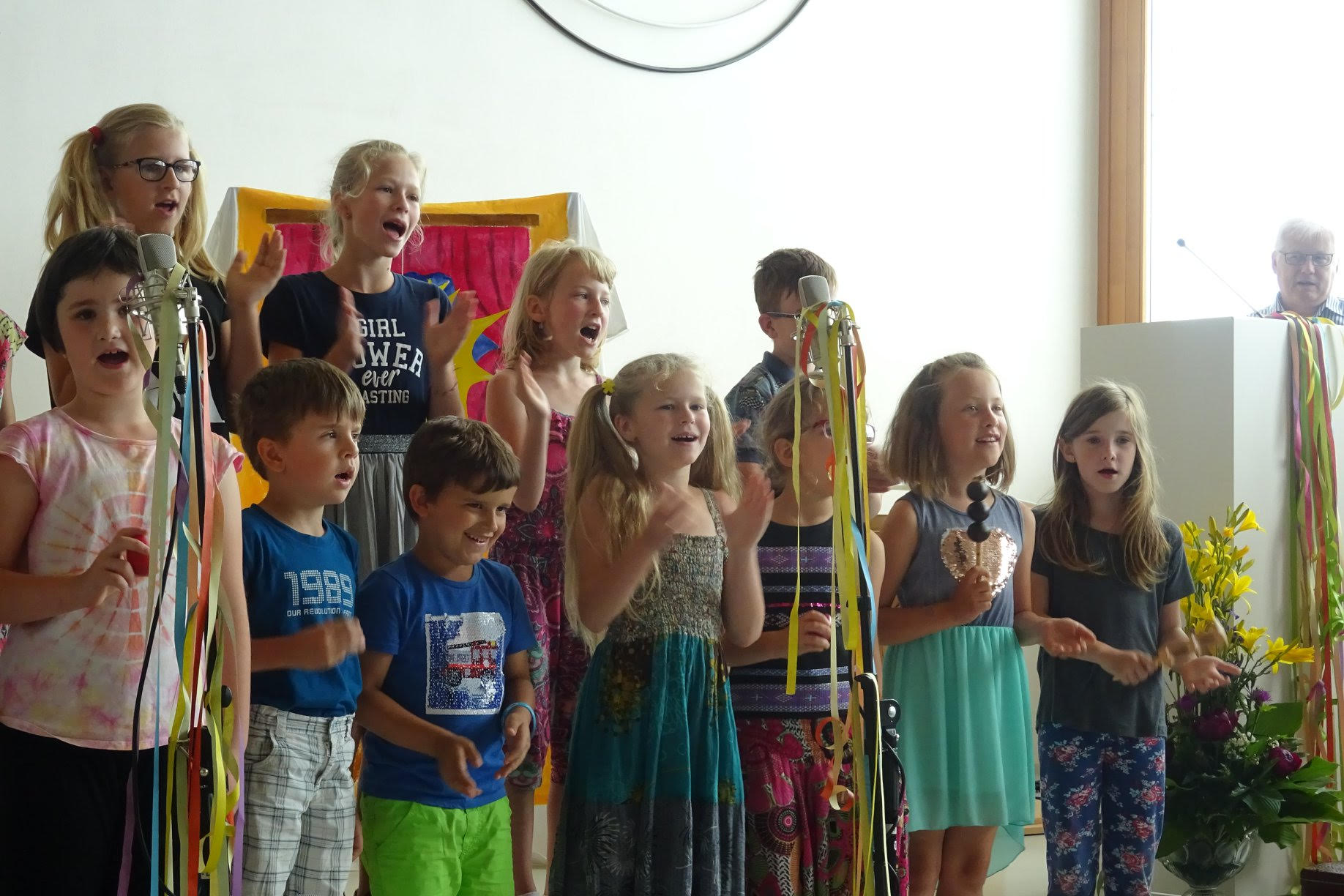
THE COMMUNITY OF SVITAVY AND MORAVSKÁ TŘEBOVÁ
In Svitavy, we help a group of Christian families run their community. It is one of the „stations“ of our church, therefore we see each other regularly and occasionally take care of Sunday services. We operate similarly in Moravská Třebová, the difference being that only according to the needs of believers. In both places we work closely with the local congregation of the Czech Presbyterian Church.
HISTORY
The beginnings of our community date back to 1909. At that time, the prayer house was built with their own resources on Nádražní street. The congregation also went through a difficult period when some members, including the preacher, were imprisoned by the communist authorities. After a hundred years of work, the old building was no longer enough, so the construction of the New Church, opened in 2010, began.
Our community is over 100 years old. In the beginning, there was great enthusiasm. For the first prayer room, Christians collected resources among themselves, but, for example, the help from missionaries from Boston was also welcome. In the 1950s, our church managed dozens of stations, but it also experienced dark times when preachers and some of our members were persecuted by the communist regime. After 1989, the community of Christians grew so much that it was necessary to build a New Church. With the great contribution of the city of Litomyšl, the work was successful and since 2010 you can find us in our oasis of concrete and glass.

The association at the end of the 19th century
The existence of congregations of the Reformed Free Church, as the Presbyterian Church was called at the end of the 19th century, mostly began with associational life. It was safe against the office authorities. Federal activity permitted more than just some religious church establishment. Alas, it must be said that these authorities were firmly connected with the Roman Catholic Church, therefore the associations were needed for helping to escape even the clashes in the church department. The Young People’s Christian Association, as the association was called at the time was founded by brothers and sisters in Bučín near Vysoké Mýto in 1896.
People gathered their resources for the construction of the prayer hall
The congregation in Litomyšl was founded in 1909, and a year later its members opened their own prayer hall. The Fikejz family, landowners from Bučina and more people gathered their money for the construction of the villa in the Nádražní street which opened its doors in 1910. Even ordinary people were a help for the construction. A grandma sold her cow and gave away her money for the cause and so on… A missionary from the Park Street Church in Boston (John S. Porter) also joined with a support which helped with the constructions not just in Litomyšl but beyond it as well. It was always about joint work.
Congregation with a record number of stations
To Litomyšl belonged a large number of stations. It was especially because of the communist systematization of 1951 which greatly expanded the number of places that had to be managed from Litomyšl. The systematization was the reason for abolishing the separate congregations in Česká Třebová and Strměchy and assigning them to the congregation in Litomyšl. Therefore, Litomyšl became a congregation with the largest number of stations at that time (overall 32) from the entirety of the Czech Unitas Fratrum, this being the name of the church after 1919. And what is a station? The station is established by the elders of the mother congregation and is a place outside the headquarters where the gospel is preached regularly. Stations are established both in villages and in larger cities and their task is a mission in the given village. They are founded with the consent of the „home“ church, they do not have to have their own preacher and can turn into an independent church over time. From these kinds of stations became independent congregations after 1989 (also already during the breakthrough of 1989) in Pardubice, Chrudim, Česká Třebová and Vysoké Mýto.
The clash with the communist regime
The congregation of Litomyšl has been through tough times. Through the ways of loyalty, struggles and imprisonments it managed to get by in the end, thank God. Active brothers Benjamin Chráska, Pavel Kamp, Karel Kalvach, Jan Hušek and Samuel Kolman went to the communist prison along with the preacher. At the beginning of 1962 when the preacher Jaroslav Polanský was arrested and imprisoned for tolerating work with youth and children (especially for activities in Pardubice), the congregation in Litomyšl had 18 stations total under its care. In 1949, before the communist systematization of the church work and business, the congregation had 190 people. In 1964 there were already 442 people, adults and children included.
Changes after 1989
The congregation has changed a lot since 1989. The original stations from which were formed independent congregations have changed their character as well as forms of work over time. The work of the charity organization Naděje, which has been developing its activities since 1990, developed first in Vysoké Mýto and then in Litomyšl. In 1992 sister Karen Freeze (again from Park Street Church in Boston), who has inherited the house of the Plch family as a legacy, donated an old property exactly for their work. After a difficult reconstruction in years 1994 – 1997 the house of Naděje (in English, the house of Hope) served the likes of children. In the same way, the apartment buildings for Soviet army officers in Vysoké Mýto have served Naděje since 1992 as spaces for the care of the elderly in the House of Peaceful Old Age. The operation of the place started fully in 1994. In Vysoké Mýto and in Česká Třebová, housing for the socially weak was launched after that. The members of the Litomyšl congregation were and still are behind the majority of the work put into these establishments in the whole area.
In the villa in Nádražní Street, the community of Christians under the Congregation of the Presbyterian Church in Litomyšl were arranging meetings for one hundred years. And when the spaces for Sunday services were becoming too small, the believers decided to assemble a new building. At this point, the establishment of the New Church was in place. And therefore, the foundation stone of the youngest church in Litomyšl was laid in 2008. The opening ceremony took place on December 4, 2010.

